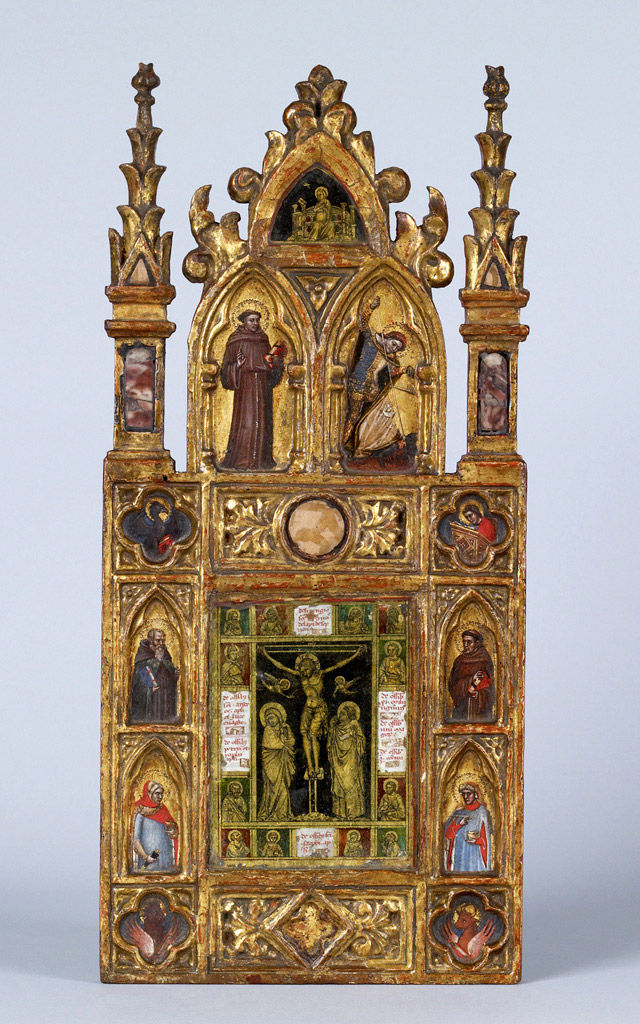Wing of a Reliquary Diptych with the Crucifixion and Saints
The Walters Art Museum, Baltimore

 Select the image to zoom
Select the image to zoom
This work, probably the right wing of a diptych, brings together an unusual range of media, combining painted surfaces with inset plaques of verre églomisé, as well as inlaid fragments of marble and ceramic. The Crucifixion at center and the Virgin at the top are on reverse-painted glass by an unknown artist, while the images of numerous saints around them are panel paintings by Tommaso da Modena (1325/29–before 1379). The panel at the top represents the Virgin Annunciate and would have faced an image of the Archangel Gabriel on the left wing. The image of the Crucifixion in the central panel is surrounded by encased relics identified by labels written in red. These are the wood of the True Cross and a stone from the Holy Sepulcher (top), the bones of the 11,000 virgins and of one of the Magi (right), the bones of St. James the Apostle (bottom), the Apostle Andrew, the Evangelist Luke, and St. Peter and St. Paul (left).
The technique of verre églomisé flourished in Assisi in the fourteenth century, where it was used in the mass production of reliquaries of Franciscan devotion. The Baltimore panel shows a marked Franciscan association by virtue of the presence of three friars among the saints portrayed: St. Francis, St. Anthony Abbot, and St. Anthony of Padua. The widespread use of reverse-painted glass for reliquaries at this time might be the basis for the mention of this technique, in The Craftsman's Handbook by Cennino Cennini (ca. 1370–ca. 1440) as especially suitable for making containers of sacred matter.




